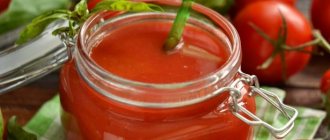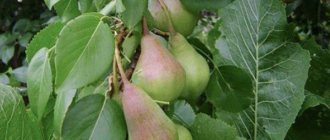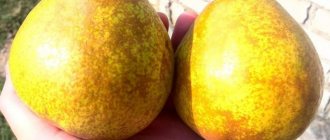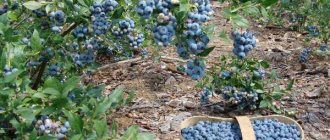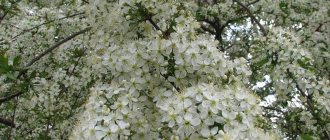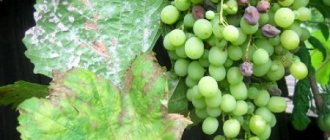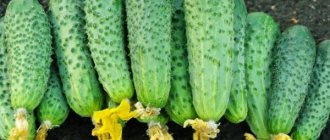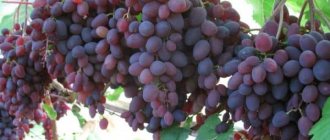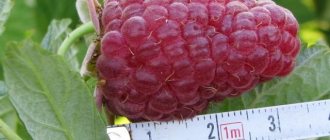Advantages and disadvantages of fruit crops
The Yakovlevskaya variety is characterized by the following qualities:
- stable immunity to diseases and pests;
- resistance to low temperatures;
- long-term storage of crops;
- large fruit sizes.
Disadvantage: demanding care and crown formation. Failure to comply with the deadlines for pruning branches contributes to their thickening, reducing the quality and volume of the harvest.
Pests and diseases
This type of pear is resistant to most diseases, especially scab and ethnomospoiasis. However, it may be affected by rust. Light yellowish spots appear on the leaves. Over time they become dark orange in color. Fruits affected by rust are removed from the branches. If a tree is affected by this disease, then in early spring it is sprayed with a 1% solution of Bordeaux mixture.
Yakovlevskaya pear resists insects and pests. But due to poor quality care of the plant, it can be affected by pests:
- Gall mite. Parasites are 0.1-0.3 mm in size. They do not allow the plant to fully develop and damage the buds and fruits. Trees affected by the gall mite bear fruit poorly, and buds and new shoots rarely appear. Fallen, damaged leaves should be removed and burned. The plant itself is pollinated in the spring using acaricidal agents.
- Aphid. These insects suck the juices from the leaves. As a result, they curl and become unsuitable for photosynthesis. If a sticky coating becomes noticeable, it is worth treating the leaves with a soap solution. For 1 liter of water you need 100 ml of liquid soap. You can fight aphids with another folk remedy. Suitable decoction of celandine or dandelions, potato infusion.
If the disease is identified, you need to immediately begin treatment and be sure to take preventive measures. To prevent diseases, experienced gardeners recommend treating the shoulder straps with whitewash in the spring and fertilizing them abundantly.
It is imperative to remove fallen leaves and branches for the winter by burning them. The soil near the tree is dug up and mulched before the winter period.
Varietal feature and characteristics
The Yakovlevskaya pear begins to bear fruit at a later stage; during the first 5 years of its life it develops the root system and crown. The variety produces stable yields, the fruit weight reaches 210 g.
Tree dimensions and height
The variety is characterized by an average tree height. 5 m, pyramidal crown.
The branches are upright, the ability to form shoots is low, which leads to the formation of a sparse crown.
Lifespan
Under favorable conditions, cultivated varieties of pears live up to 90 years. After 45 years, a tree loses its yield and mass of branches.
To maintain productivity, the crown is rejuvenated by pruning branches or the tree is uprooted.
Fruiting
The variety begins bearing fruit from the 6th year of growing season, increases its yield up to 20 years, and with good care up to 40 years, consistently produces the maximum number of large fruits.
In private gardens, under good weather conditions and proper care, you can collect up to 50 kg of pears from a tree.
When growing fruit on an industrial scale, Yakovlevskaya’s yield reaches 180 c/ha.
Flowering and pollinators
Yakovlevskaya pear is self-fertile, pollination occurs with pollen from its own flowers. Growing trees in the garden with simultaneous flowering times increases the yield. Such varieties can be Saint-Germain, Saratovka, Pervomaiskaya, Nika.
Ripening time and harvest
Warm summers allow harvesting in the first ten days of September. Rainy, cold summers slow down the ripening of fruits, and mass harvesting occurs at the end of September. In a warm, dry autumn (without nighttime drops in temperature), pears ripen on the trees, gaining sweetness and juiciness, until mid-October.
Tasting qualities and uses of fruits
Ripe pears have tender, buttery, juicy flesh with a slight graininess. The content of sugars and ascorbic acid is 11-10%, which determines the balance of sweet and sour taste. The pear aroma contains floral notes. The taste qualities of the variety are rated by tasters at 4.5 points on a 5-point scale.
Application of fruits:
- fresh consumption;
- obtaining dried fruits;
- winemaking;
- making preserves, jam, confiture, marmalade, compote, juice, nectar.
See also
Description of the early pear variety Bryansk Beauty, planting and care
Read
Transportability
In special storage facilities, the variety does not lose its presentation and retains its taste for up to 6 months.
Pears are transported in wooden or plastic containers with slits for air access, wrapping each fruit in parchment paper.
Drought and frost resistance
The Yakovlevskaya variety is frost-resistant, can withstand temperatures of -38 C with minimal damage and subsequent recovery, which is not typical for other varieties zoned for the Central Black Earth Region.
Pear is demanding of moisture. In hot and dry summers, the variety requires frequent and abundant watering, otherwise it reduces the size of the fruit and reduces the yield.
Immunity to diseases and insects
Yakovlevskaya pear has a stable complex immunity to diseases and pests, which must be maintained and strengthened throughout the growing season of the tree.
The variety is resistant to diseases and pests:
- scab;
- powdery mildew;
- fruit rot;
- cytosporosis;
- copperhead;
- leaf flea beetle;
- codling moth;
- flower beetle.
History of selection and region of breeding
The pear variety was obtained by hybridizing the varieties “Daughter of the Dawn” (high-yielding with small-grained, aromatic fruits) and “Talgarskaya Krasavitsa” (frost-resistant variety with elongated amber fruits).
The originator of the variety is GNU VNIIG and SPR named after. Michurina. Authors: Stanislav Pavlovich Yakovlev, Anatoly Pavlovich Gribanovsky, Nikolai Ivanovich Savelyev, V. V. Chivilev. Included in the state register of the Russian Federation in the early 2000s.
The variety has gained wide popularity in the central part of the country. The first growth occurs in the Black Earth zone of the Russian Federation.
The variety is suitable for growing in the Moscow, Yaroslavl region and nearby cities.
The pear tree can also be found in Belarus, Ukraine, Moldova, and Estonia. The variety is ideal for a temperate continental climate with mild winters.
In these regions, pear varieties of Cathedral, Krasnobokaya, Vernaya, Lesnaya Krasavitsa and Moskvichka thrive well when grown.
Planting Yakovlevskaya pear
Choosing healthy seedlings, knowing and following the rules of agricultural technology is the key to stable harvests.
Pears are planted in an area protected from northern winds, on an elevated place or on gentle slopes on the south side.
Groundwater should lie in an area no higher than 2.5 m from the soil surface.
Deadlines
Pear is a heat-loving crop, the best time for planting is early spring: late March, early April.
In autumn, trees are planted a month before the onset of frost so that they can take root. Low snow winters, unexpected frosts, rodents are negative factors that contribute to the death of young seedlings.
Soil requirements
Pear loves fertile soils, rich in nutrients, warm, of average mechanical composition, cultivated by humans during cultivation. Loam with a neutral environment is best suited.
Peat and humus are added to sandy soils; river sand, peat, and organic fertilizer are added to clay soils.
Planting layouts
The pear is a large tree, light-loving - this requires following the recommended planting scheme: 5x4 m. With a lack of light, the pear produces a poor harvest, the fruits lose their taste.
Preparing the site and seedlings
For spring planting of trees, holes are dug in the fall, and for autumn planting, 2 weeks before planting, so that the earth settles. The holes are marked with dimensions of 60x60 cm and a depth of 50 cm, while the upper and lower layers of earth are folded in different directions.
The roots of the seedlings are not cut, the branches are shortened after planting.
Technological process of planting a tree
The procedure for planting a seedling:
- A stake is placed at the bottom of the hole below the level of the skeletal branches.
- Mix the top layer of soil with a bucket of humus, 200 g of superphosphate, 20 g of potassium sulfate and pour the mixture into a heap at the bottom of the hole.
- Place the seedling on a hill, straighten the roots on the sides.
- Cover with earth and compact tightly.
- Form a hole for watering using 5 buckets of water and water.
- The trunk is tied to a stake in a figure eight to prevent the seedling from swaying in the wind.
The root collar should remain at ground level after watering the soil, the graft should be above the soil on the east side.
Harvesting and preparing for winter
The fruits are harvested when the skin color has reached a green-yellow color and the pear size is more than 7-8 centimeters. The pear should be firm to the touch. The collection is carried out 2-3 times per season. Pears stay on the tree perfectly and don’t fall off for a long time, however, you shouldn’t hesitate. The collected fruits are stored in the refrigerator for up to 2-3 months. The pear should be clean and dry.
Important!
For long-term storage, pears can be placed in a cardboard box or wrapped loosely in paper.
When ripe, Yakovlevskaya pears do not need to be covered for the winter. The main procedure for preparing for winter is mulching the soil. It is better to cover a young tree up to 5-6 years old with agrofibre or fabric, especially for the northern regions. The soil is also mulched with peat or humus.
Rules for caring for the variety
Caring for a pear consists of mandatory procedures:
- glaze;
- weeding;
- loosening, mulching, fertilizing the soil;
- branch pruning;
- preventive work.
Competent agricultural technology is the key to strong immunity and stable harvests.
Watering frequency
The pear is watered:
- before flowering, in case of little snowy winter and dry spring;
- 20 days after flowering;
- during fruit formation;
- in early September to increase fruit juiciness and develop the root system;
- before winter to create a supply of moisture for spring, favorable wintering conditions, and protection from rodents.
See also
Description of the Packham pear variety and the subtleties of cultivation
Read
Fertilizer application
The pear does not need nutrition for 4 years after planting if the planting soil mixture is properly prepared.
Fertilizing with nitrogen fertilizers (urea, ammonium nitrate) begins in the 3rd year of the growing season in early spring in an amount of 20 g/m2.
In the 5th year of tree development, before fruiting, in the fall, fertilize with a mixture of organic fertilizer with superphosphate 45 g/m2 and potassium sulfate 25 g/m2.
Trimming
Pruning pear branches helps to shape the tree, improve growing conditions, increase productivity, and improve the taste of the fruit.
The first 6 years of the tree's growing season form a crown with 5-6 skeletal branches, one branching order, and a large number of skeletal branches bearing a massive number of flower buds.
The initial crown of the seedling is formed during planting:
- The central branch is left 25 cm above the skeletal branches.
- 3 skeletal branches at an angle of 450 are cut at the same level.
- The branches are shortened by 1/3 of the length.
In the 2nd year of the growing season, one is left on the skeletal branches, growing upward. Upright growing competitors are cut out, leaving branches that have grown horizontally, directed in different directions at a distance of 40 cm.
According to this principle, an unthickened crown is formed, with free access to sunlight and air.
Whitewash
To prevent and heal bark damaged by frost, whitewash is used in mid-November.
Composition of the whitening product:
- water – 10 l;
- lime – 1 kg;
- mullein – 3 kg;
- clay – 4 kg;
- copper sulfate – 50 g;
- laundry soap – ½ pack;
- office glue – 50 g;
- drug Epin – 6 ml.
Coat trunks and large branches 2 times with an interval of 2 hours.
Loosening and weeding of the tree trunk circle
Weeding is carried out regularly; the drug Ground Bio eradicates the growth of weeds on the site.
Spring sowing of green manure along the tree trunk improves the structure and nourishes the soil, eliminating the growth of weeds. Loosening the soil to a depth of 5 cm is carried out in spring, autumn and rainy summer to provide air access to the root system.
Seasonal treatments
Seasonal preventive work against diseases and pests includes:
- collecting and burning leaves;
- loosening, mulching, digging the soil;
- pruning diseased and old branches;
- whitewash;
- treatment with protective agents.
The drugs used are copper sulfate, Bordeaux mixture, Topaz, Hom, Skor, Iskra, Antiklesch.
Preparing for winter
Pre-winter preparation of a pear trunk includes:
- whitewashing from burns and diseases, coating with a mixture of clay and manure from rodents;
- insulation with thermal insulation materials;
- mulching the soil with peat, humus, manure;
- covering the tree trunk circle with pine or spruce branches.
Planting and care
The variety is unpretentious in cultivation. Can grow on any soil. Does not require additional watering. Responds well to feeding. When forming a tree, annual growths are left unchanged.
Large stems are shortened so that there is a distance of 60-80 centimeters between them. If the crown is pruned irregularly, the fruits can become very small.
The height of pears in the seed rootstock is usually 5 meters, the width is 6 meters, the height of the trunk with these indicators is 70 centimeters.
Watch the video on how to prune a pear.
Summer varieties of pears on quince rootstock
Unfortunately, at present, most nurseries offer pear seedlings on wild pear seed rootstock, or on clonal rootstock, also grown from pear cuttings. In our city there was only one garden center that sells pears grafted onto dwarf quince rootstock “IS 2-10”.
Due to the fact that not every of the numerous varieties is able to take root well on quince, the range of cultivars on the “IS 2-10” rootstock is significantly limited. Nevertheless, very popular and worthy varieties can be found on quince rootstock.
Pear on quince rootstock "Allegro"
The fruit can be harvested as early as mid-August. Elongated pears with an elegant yellow-green color and pink blush, average weight 140 grams. The white, sour-sweet pulp has a delicate texture and pleasant taste. High-yielding trees of medium size, with a drooping crown. The variety is characterized by high winter hardiness and increased resistance to fungal diseases.
Pear on quince rootstock "Lada"
One of the earliest summer varieties - the first pears can be harvested at the end of July-early August, and the fruits of this variety are quite shelf-stable and can be stored for about 60 days at a temperature of 0 degrees. The shedding of ripe pears is low. "Lada" regularly bears fruit with juicy, slightly aromatic pears of a sour-sweet taste with fine-grained pulp, 100-110 grams in size. The crown shape is standard, the tree is medium-sized, highly winter-hardy and resistant to diseases and extreme living conditions.
Description of the Yakovlevsky variety
Let us consider separately the appearance of the tree and the fruit.
Tree
The trees are of medium height, reaching a height of 10 meters. The annual approximate growth is about fifteen centimeters in width and about twenty-five centimeters in height. The crown of the tree is medium leafy.
It has a wide classic shape in the form of a pyramid. Sometimes found in the form of a cone. Fruiting is mixed, mainly on fruit formations of all types. The shoots are ordinary, smooth, burgundy in color. There is no pubescence. There are countless lentils.
The buds are small, dense, curved to the side. They have a conical shape. The leaves are medium-sized, oval, emerald green. Both leaf tips have long, pointed edges. The lateral edges of the leaves have fine serrated, elongated serrations. Petioles are elongated and wide.
The leaf blade has a blunt base and a curved top. Upon palpation, the surface of the leaves is smooth with a slight sheen. The stipules are awl-shaped.
Important! With severe foliage thickening, pears may decrease in size. The variety requires systematic crown pruning.
Fruit
The fruits are average. The weight reaches from 115 to 125 grams. The largest ones range from 175 to 215 grams. The pears are elongated, smooth, and have a regular classic shape. In rare cases, they have an elongated diamond shape.
The skin is not hard and you don’t feel it when eating. It has a pleasant, silky surface with a slight oily layer and a touch of wax. During harvest, the main shade of pears is emerald. After full ripening it acquires an amber-emerald color.
The outer shade has a sunny blush, is pronounced, and is located on 1/3 of the fruit. The stalks of pears are elongated, wide, curved. The funnel is miniature, very narrow. The calyx is half closed, non-falling. The saucer is thick and small.
The heart is shaped like an onion. Seed chambers are closed type. The seeds are ordinary, elongated, brown in color. They have a cone shape. The flesh is beige in color, semi-oily. The density is average.
Endowed with slight granulation. The taste of the fruit is sweet with a slight sourness. They have a floral-pear aroma.
Choosing a landing site
It is necessary to plant Yakovlevskaya pear in a well-lit place. If this condition is not met, you may end up with fruits that are not too sweet, and the overall yield will be less.
Good soil drainage is important; stagnant water is harmful to the tree. To prevent it, you can plant a pear tree on a hill. The passage of groundwater should be no closer than 2-2.5 meters.
The tree is not very demanding on the composition of the soil, but it grows better on sandy loam-chernozem, as well as loamy or sandy soil, provided that fertilizers are applied. Clay soils are not suitable for wood. If the site has a similar type of soil, you should prepare the planting hole according to all the rules. Acidity level – 5.6-6.0.
Plant characteristics
The tree of this variety has a medium height and a pyramidal crown. It bears fruits of medium and large size, up to 210 grams, with a regular elongated pear shape. The skin has a waxy coating, its color is green-reddish. The pulp of the fruit is cream-colored, delicate in consistency, and tastes sweet and sour. The fruit was rated 4.5 points.
Yakovlevskaya pear is characterized by good yields. The fruits are harvested in mid-September. They are stored for up to 180 days.
The Yakovlevskaya pear, described in the article, has excellent winter hardiness. Resistant to scab lesions and entomosporiasis.
The only drawback of the variety is the smallness of the fruits in case of thickening of the crown.
Reviews
Yakovlevskaya is known and loved by gardeners all over the country. It is often said that the pear produces a bountiful harvest and is easy to grow. Experienced gardeners who have been growing pears for many years are advised to add a potassium supplement in the spring to bring the time of fruiting closer. Bordeaux mixture is used as protection against pests and insects. Spray it all over the tree in the spring, before the buds open.
“Yakovlevskaya pear” is one of the most successful varieties of fruit crops. The variety is suitable for any region, takes root successfully and does not require excessive care.
Description of the Chizhovskaya pear variety
Breeding work on this pear variety was carried out at the Agricultural Academy named after. K. A. Timiryazeva. Russian breeders S. T. Chizhov and S. P. Potapov used the Belgian Forest Beauty and Olga as ancestors to develop a new variety.
The productive Chizhovskaya pear is often found in areas of the Moscow region
After testing and registration in the State Register in 1993, this pear was recommended for cultivation in the Central, Northwestern and Middle Volga regions. The popularity of the variety was facilitated by its high yield, unpretentiousness in cultivation and resistance to unfavorable conditions and low temperatures, due to which it soon spread throughout Ukraine and Belarus.
Did you know? Botanically, the closest relative of the pear is the rose.
Description of the tree
This medium-sized, standard-type tree grows up to 2.5 m in height, which allows it to be harvested by hand. The crown of a young pear is thick and narrow. The vertical main shoots, which initially have a slight slope, gradually diverge after fruiting and form a pyramidal crown. Gray bark covers the trunk and adult branches. Young shoots initially retain a red-brown tint.
The dark green leaf blades are smooth and densely growing, have an oval-elongated shape. They are characterized by a slight bend along the central vein. The flowers are white and medium in size, in an inflorescence there are 5–7 pieces.
Abundant flowering of the Chizhovskaya pear promises a wonderful harvest
Description of fruits
Pears of this variety are smooth, of an ordinary pear shape and weigh 100–140 g. The fruits are yellow-green, sometimes with a pinkish blush. The skin is thin and tender, there is no shine, the surface is dry. The light yellow pulp received a tasting score of 4.1–4.2 points for its fresh, sour-sweet taste and light aroma. The slightly oily pear pulp melts in your mouth and has no granulations. The fruit contains 5–10 medium-sized brown seeds in a small heart.
The peduncle is short and slightly thickened. The versatility of use allows the fruits to be used both fresh and in a variety of preserves.
The variety is often grown for sale - the fruits are attractive in appearance, they tolerate transportation and storage well, and consumers love the taste of these pears
